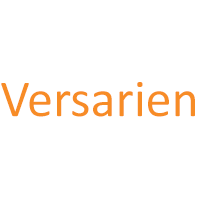Versarien PLC (LON:VRS) Chief Executive Officer Neil Ricketts caught up with DirectorsTalk to discuss their collaboration with the National Graphene Institute at the University of Manchester
Q1: Neill, could you explain in more detail your collaboration with the National Graphene Institute at the University of Manchester?
A1: Certainly. So we work very closely with this national treasure, a £60 million investment by central government to develop the graphene story out of academia and into real world products. We’re very very fortunate that as a result of our acquisition of 2-DTech, who obviously have strong links with the University of Manchester, we’ve been working very very closely for the last couple of years with the National Graphene Institute as it’s become live. They have about £20 million worth of equipment there for testing of graphene products and obviously some of the world leaders in being able to develop these technologies like Professor Bob Young who is, quite rightly, a world leader in the development of carbon-fibre composites with these nano materials. So we’ve been working with them over the last couple of years to develop this project, it was part of the consideration of the acquisition of 2-DTech and our research people have been working very very closely with Professor Young to be able to actually demonstrate that graphene is not only a great theoretical product but actually is now a practical product as well.
Q2: What are the key findings of the project?
A2: Well the project itself started off relatively risky, we didn’t actually know what we would find out as part of this whole process. We knew about the theoretical benefits of using graphene but actually now we’ve been able to demonstrate by actually making carbon-fibre composites and testing them exhaustively with our material that we’ve seen great improvements in the mechanical properties and I’m hoping to be able to say more about that at an event in the near future. Ultimately what we’re seeing is big improvements in the strength, big step changes in the mechanical properties of carbon-fibre composites.
Q3: So how is the graphene market developing and what’s driving demand?
A3: So we know that graphene has been voted as one of the most significant materials of this century but what we’ve not had is reliable, repeatable access to really really good material. As part of our patented process and our scale-up that’s going on at Cheltenham, we’re able now to give the market the material that it’s really requesting. There are lots and lots of different derivatives of graphene and some operate much better in certain circumstances than others but what we’re actually seeing is the product that we are developing, all the products in some instances, are actually giving demonstrable improvements in performance and that’s what’s driving demand. So there’s been a lot of interest previously but in all honestly it’s struggled to actually show the benefits that are required, what we’ve spent the last year doing is getting all of that test data for plastics, composites and batteries actually proven now. So big companies are now requesting access to the material in order to be able to look at the next generation of products.
Q4: What do you expect the commercial benefits of this relationship to generate for Versarien?
A4: In terms of our relationship with the National Graphene Institute what we know is that is a worldwide focal point so despite lots of press saying that there are other areas of development of this material, Manchester is still the hub and is still seen as a global hub for this technology. We’re very fortunate that our laboratories and our people are absolutely intertwined with the University of Manchester, it gives us a massive advantage so when these companies find the National Graphene Institute they’re going there and asking for access to research and to materials. We’re very fortunate that we now have a proven track record not only with the academics but with the Institute of being able to supply some of that demand.

